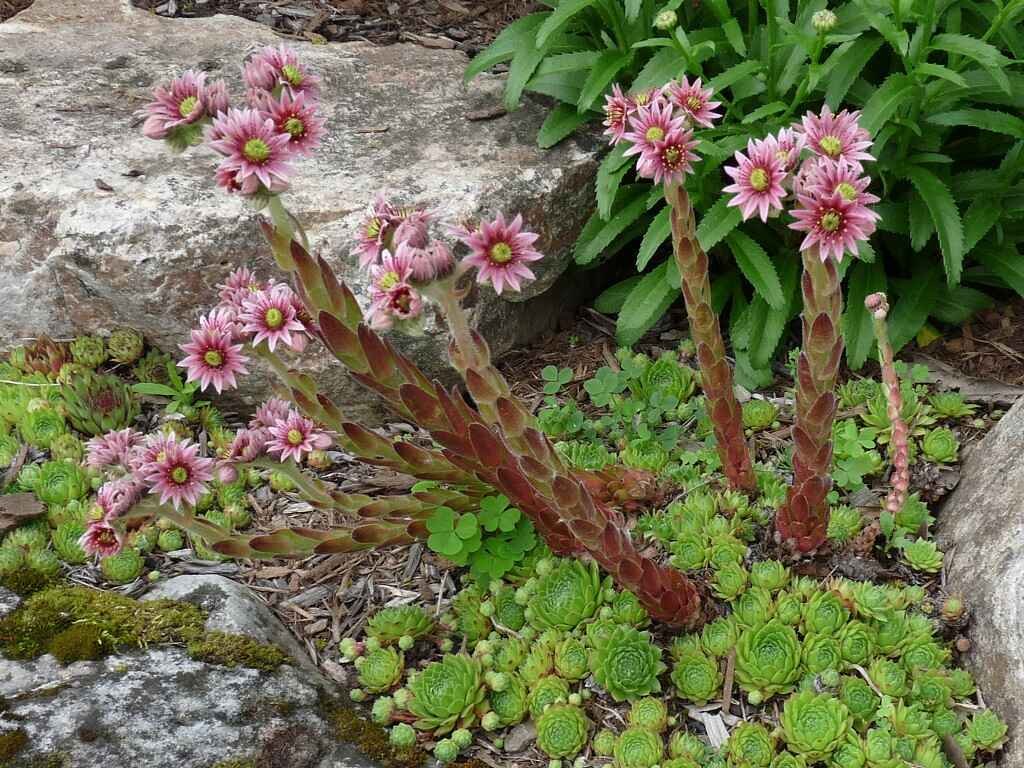Hens And chicks Succulent is a common name used for any group of small succulent plants, which symbolises a plant that possesses an enlarged part to store water.
And include ground-hugging species of Sempervivum which means houseleeks.
The name itself shows an interesting symbolism through the concept of – Hens And Chicks which means ‘Hens’ indicate the mother plants while ‘Chicks’ indicate a flock of offspring plants.
This cute little succulent plant species belong to the types of the flowering plant family known as, Crassulaceae.
The Hens And Chicks Succulent natively grow in southern Europe and northern Africa.
Growth Characteristics Of Hens And Chicks Succulent
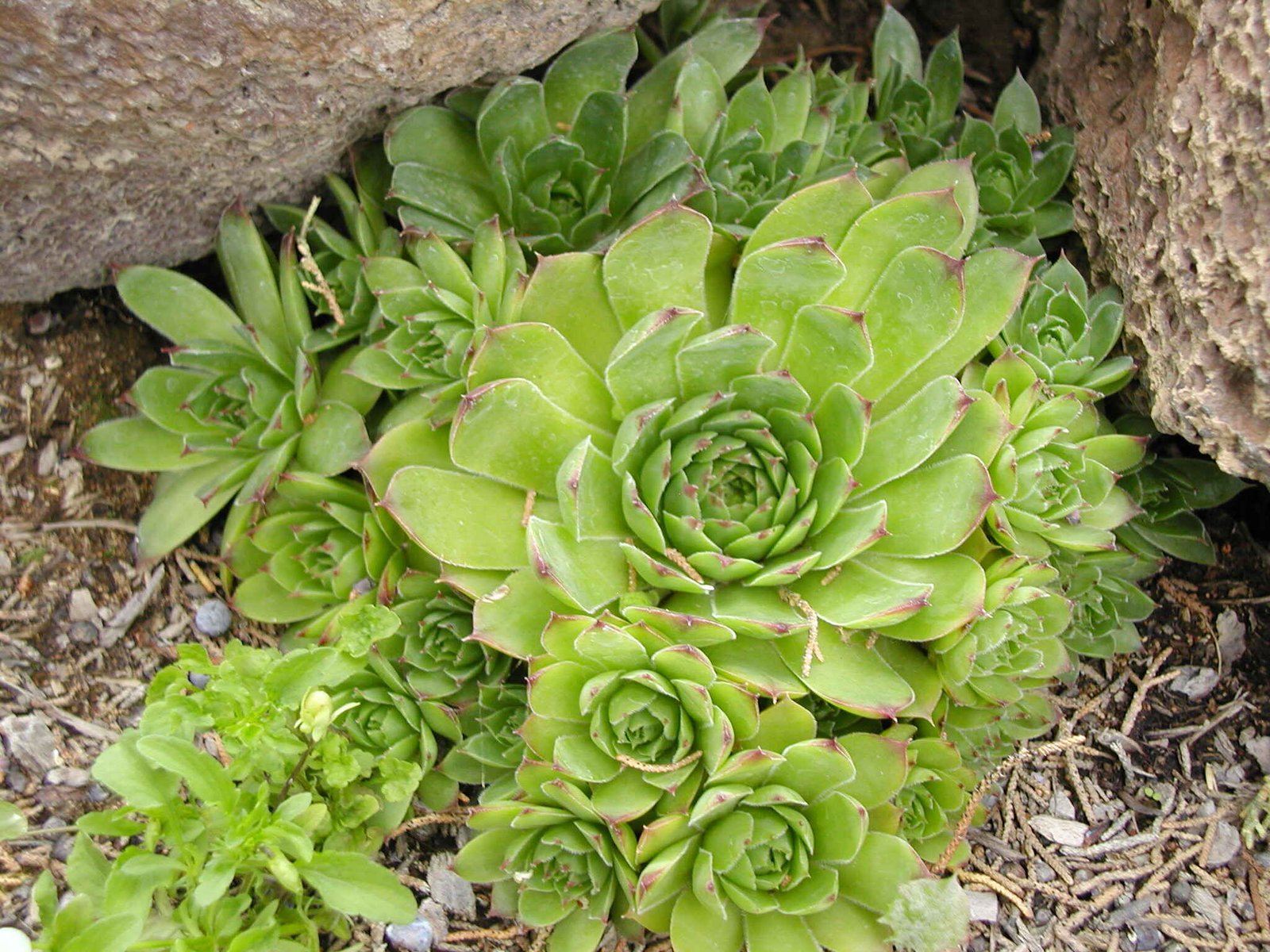
The succulent plants grow close to the ground with leaves and form around each other in a rosette.
These species of succulent plants propagate by Offsets.
These succulent plants initially grow as tiny buds on the main plant and then germinate their roots and take up residence close to the mother plant.
Your Hens Succulent will spread through underground roots and will produce at least four Chicks Succulent in each growing season.
These little succulent plants are called offsets and can they be broken off and transplanted to new areas which you desire.
Physical Characteristics Of Hens And Chicks Succulent
Hens And Chicks Succulent the Sempervivum tectorum are low-growing green succulent plants.
These succulents look a little like rubbery roses with thick, fleshy pads arranged in a rosette pattern.
The leaves of the little succulent are pointed and have some purple tips that grow in shades of red.
These succulents are also considered, Alpine or rock garden plants, because of the succulent’s hard surface and are drought resistance.
Hens And Chicks Growing Tall
How Fast Do Hens And Chicks Spread?
The answer is that the Hens And Chicks Succulent usually, spread within 3 weeks.
Can Hens And Chicks Succulent Be Gifted?
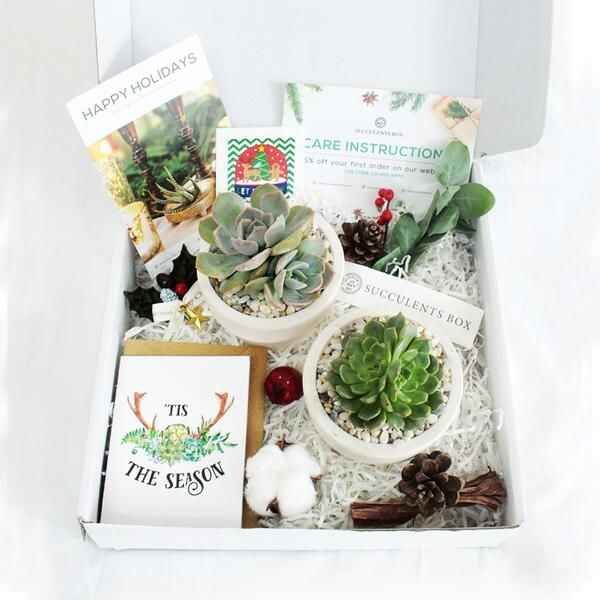
The answer is Yes, Hens And Chicks Succulent can be a good succulent gift.
To give the Hens And Chicks Succulent as a gift, you only need to follow some easy steps such as;
- First, you have to separate the plant
- and report the new plants into a decorative pot.
- Then, after you are done, use a well-draining cactus or succulent potting soil.
- afterwards, you can mix your succulent soil mixture by combining regular potting soil with an equal amount of pumice or Perlite.
- Also, Terra cotta or clay pots breathe and let plants dry out quicker,
- So, when it is ideal for Hens And Chicks Succulent in a little pot.
- Because these plants like to be a little pot-bound so, they do better in pots that are not too big for the succulent.
Hens And Chicks Succulent Care
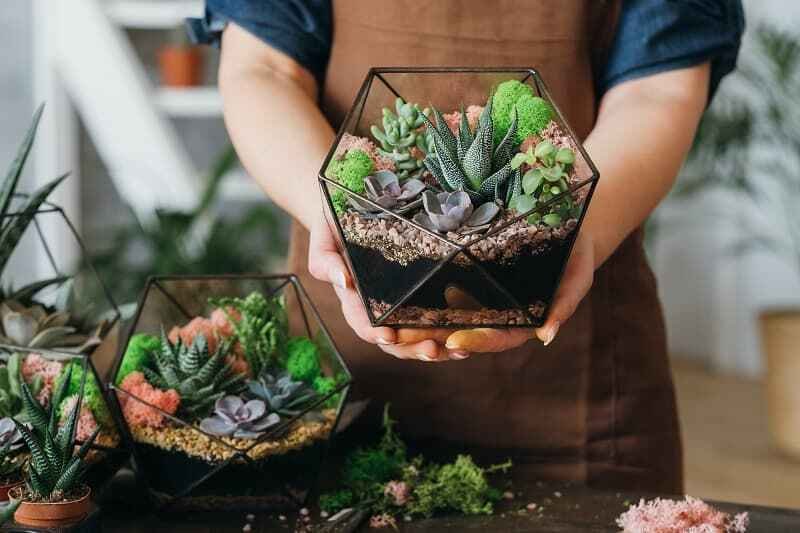
Hens And Chicks Succulent plants are among the best perennials for rock gardens.
These plants are also successful drought-tolerant succulents.
This type of succulents grows well in cracks, and stone walls or between garden stepping stones.
Many people grow these succulents on thatched roofs to help prevent fires and provide a winter vegetable, as they are edible.
There are some easy requirements you have to provide to your Hens And Chicks Succulent such as;
1. Light
One of the most important caring elements is to grow your succulents in full sun for at least six hours daily so that the succulent plant will grow easily.
Sunlight will lead the plant to get its maximum colour in the leaves, and reproduce enough “offspring.”
Further, the plants can also grow in partial shade as well, especially if you care in an especially hot, dry climate time.
2. Soil
Hens And Chicks Succulent plants are especially not fussy about their soil and can grow best in a mixture that is poor and sandy.
The main soil requirement you need to provide for the plant is that the succulent needs a well-draining system.
If your soil is heavy and does not drain well then, put some peat into the mixture to increase the oxygen in and drainage.
Further, If you are growing your succulent plants in a container then, The best potting medium is a mix formulated for succulents and cactus.
You can also choose a pot that is made from clay or terracotta to help wick extra moisture from the soil and The Hens And Chicks Succulent plant mostly like a neutral soil pH.
3. Temperature and Humidity
Hens And Chicks can happily grow in a range of temperatures but the succulent mostly like an average climate between 65 and 75 degrees Fahrenheit.
If the temperatures drop too low then, the succulent will not necessarily die off but will stop its growth and be in a semi-dormant state.
Further, Hens And Chicks Succulent can withstand a wide range of humidity levels and are quite popular in dry climate areas.
4. Water
Hens And Chicks succulents are good droughts-bearing perennial plants, so these succulents can withstand even weeks at a time without proper watering.
You can give newly transplanted plants sufficient water to help them get nutrition, but once they are grown up, you have to be careful not to over-water them.
Moreover, you need to check the soil and make sure it is dry before you water the succulent.
How To Water Hens And Chicks Succulent?
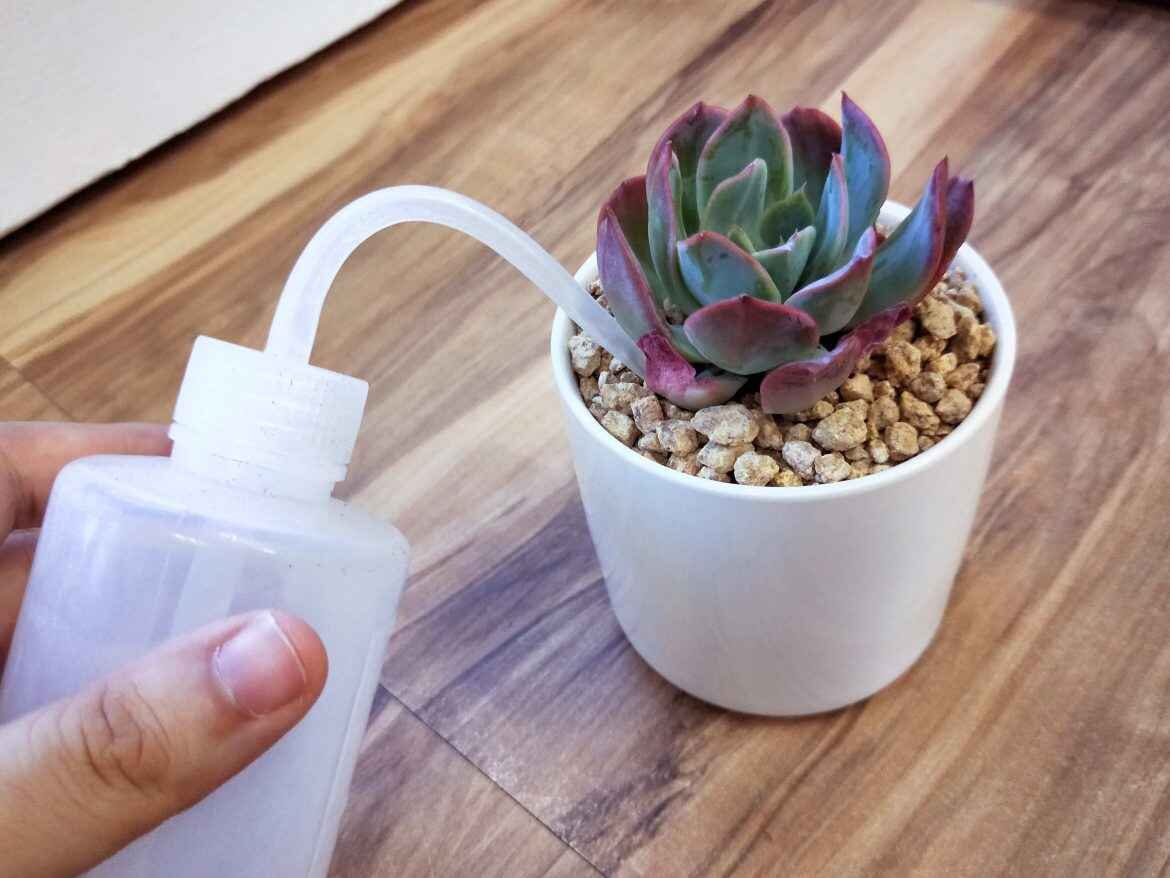
One of the most asked questions is, about the wagering requirement of Hens And Chicks Succulent and the answer is;
You must water this succulent only when the soil is dry.
5. Fertilizer
It is not a must for you to provide fertilizer to these succulent plants. But, if you see your succulent is weak then you can provide a small amount of fertilizer.
Propagatational Method Of Hens And Chicks Succulent
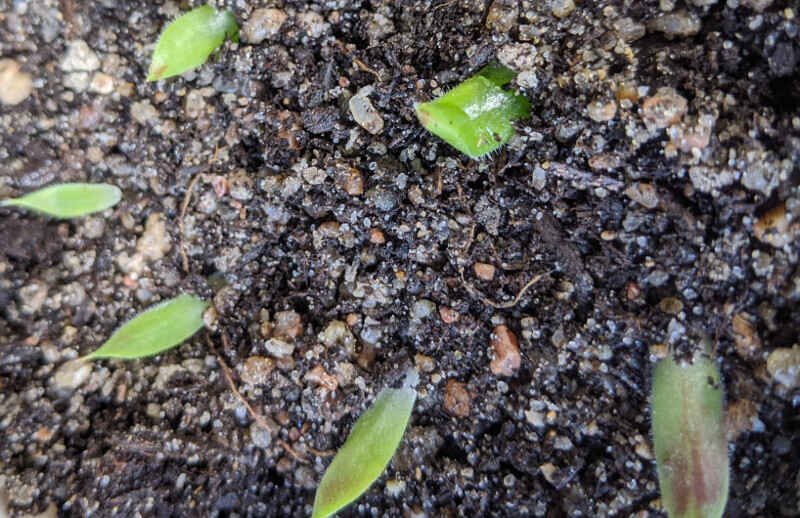
As you can propagate many plants and succulents, you can propagate your Hens And Chicks Succulent plant too.
The proportional method for this little succulent plant is the Offset Proportional Method and the simple techniques to follow are;
- First split the offsets (the chicks succulent) from the parent plant.
- Then, (the hen succulent), preserve the roots of each if possible.
- Afterwards, you have to transplant the offsets into well-drained soil, creating a shallow hole where you can spread out the roots.
- Make sure to replace the soil with the crown of the plant and gently compact it around the roots.
- After some time, you have to give the offset a light watering, but let the new plant dry out between waterings.
- Finally, the Plants will spread on their own under ideal conditions.
Find detailed propagation steps here.
There are 3 Main Types Of Hens And Chicks Succulent which are different from the reproduction method.
The 3 Major Types Of Hens And Chicks Succulent are below.
1. Sempervivum
This particular type of Succulent grows from babies on runners.
You just pull off the chick succulent and plant elsewhere and it is best to remove the baby plant when the runner has begun to fall off.
Also, the offsets root quickly connect with the soil and it is enough for the plant to start growing.
2. Jovibarba Heuffelii
Other species that do not produce “chicks” succulents on stolons are Jovibarba Heuffelii.
These types reproduce through the offspring of this plant and are produced within the mother plant.
To propagate you must split the plant with a knife.
3. Jovibarba Rollers
These types of Hens And Chicks Succulent produce lightly attached chicks succulents that easily pop off and roll away from the mother plant.
Seeds taken from the Sempervivum flowers generally produce plants that are untrue to type.
Varieties Of Hens And Chicks Succulent
There are about 120 species of Hens And Chicks Succulent.
In them, the main species is Sempervivum Tectorum and there are some other species that fall in the main group.
Some of the major Hens And Chicks Varieties are;
1. Sempervivum Tectorum
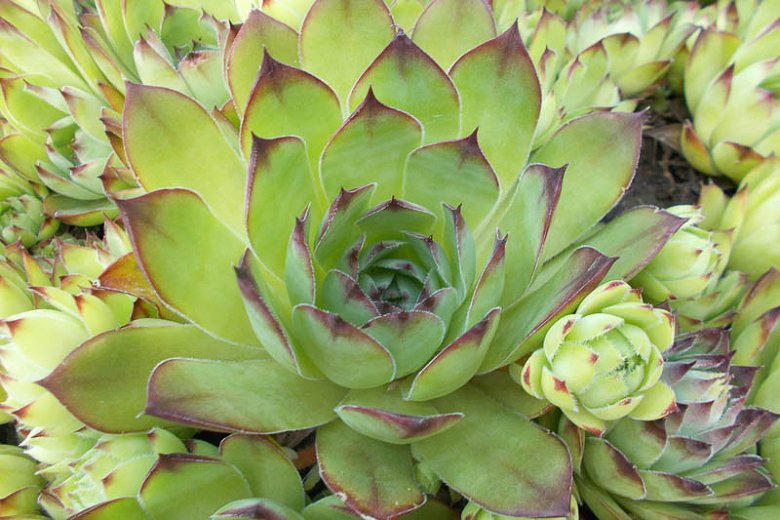
This is the Common Houseleek knew as, Sempervivum Tectorum.
This is a species in the Crassulaceae family and is a flowering plant.
This species of succulents are native to the mountains of southern Europe and they are cultivated in the whole of Europe for their appearance.
This species is considered in the Roman tradition as it protects buildings against lightning strikes.
Identification Of Sempervivum Tectorum
Growth
Usually, this succulent Grows up to 15 cm (6 inches) in height and by 50 cm (20 inches) width in a form of a rosette.
This succulent is perennial and spread by offsets.
Leaves
It has grey-green, tufted, pad-like leaves of about 4–10 cm (2–4 in) in diameter which looks like a red rose.
Flowers
In summer the Sempervivum Tectorum bear’s clusters of reddish-purple flowers of about 8 to 16, on hairy straight flat-topped stems.
Species
The species is highly variable because hundreds of cultivars have been propagated, sold, and traded for nearly 200 years.
2. Sempervivum Altum

Sempervivum Altum is another species of Hens And Chicks Succulent and is a flowering plant.
These succulent are also native to the Caucasus Mountains and native to the Crassulaceae family.
Growth
This succulent type grows with succulent leaves in rosettes of about 1 to 5 cm across, and the leaves are young.
The flowers are pink edged with white also with yellow anthers that grow on a stem of 30 to 40 cm in height.
3. Sempervivum Arachnoideum
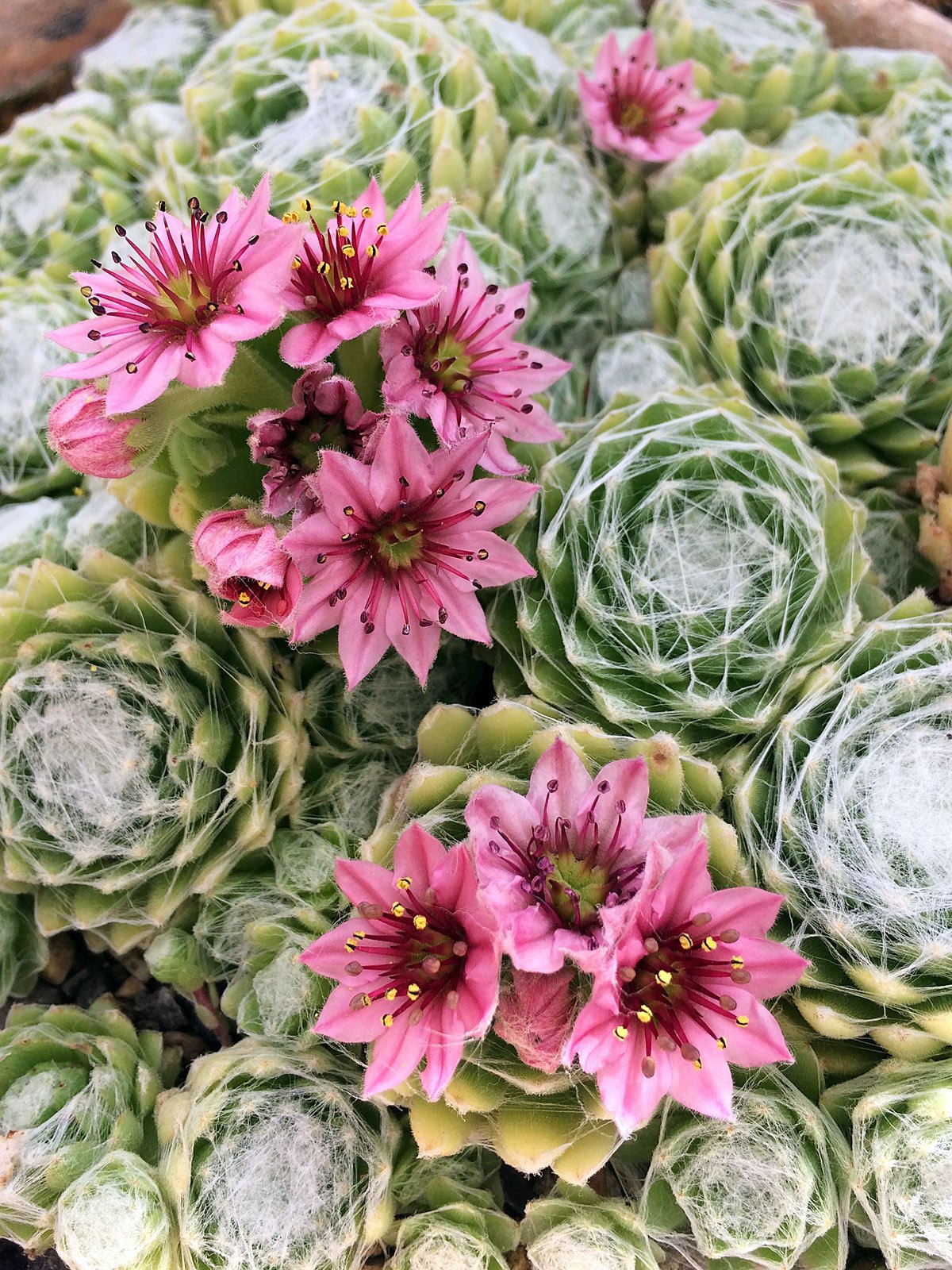
Sempervivum Arachnoideum is the cobweb house-leek plant.
Like all the above succulent plants, this is also a species of flowering plant of the Crassulaceae family.
They are also native to European mountains, in the Alps, Carpathians and Apennines.
Growth
This succulent grows up to 8 cm (3 inches) in height and by 30 cm (12 inches) in width in a form of a rosette.
These succulent plants grow very well in colonising hot, dry areas mainly through the offset proportional method.
4. Sempervivum Calcareum

Sempervivum Calcareum is also a houseleek and is a flowering plant of the stonecrop family of Crassulaceae.
This is native to the southern Alps in Europe.
Identification Of Sempervivum Calcareum
It is an evergreen perennial succulent that has a rosette with thick leaves that store water.
Leaves
The leaves are usually green with reddish-purple tips.
Reproductive Method
And this succulent plant reproduces with asexual – (non-sexual) budding.
speciality
One of the special characteristics is that these succulents also possess monocarpic sexual reproduction which means they flower only once and then die off.
5. Sempervivum Ciliosum

Sempervivum Ciliosum is also known as the Teneriffe houseleek.
This is also a species of flowering plant in the stonecrop family of Crassulaceae.
These succulent are native to Southeastern Europe.
One special character of this succulent is that a superficial resemblance, houseleeks are not closely related to cactus plants.
Growth
This succulent Grow only to just 10 cm (3.9 inches) in height and by 50 cm (20 inches) wide.
Leaves
This succulent is a spreading evergreen perennial that forms spheres of pointed, succulents that are of hairy grey-green leaves.
Flowers
The mature rosettes succulents may produce yellowish flowers on stalks that grow up to 10 cm (3.9 inches) in summer.
6. Sempervivum Macedonicum
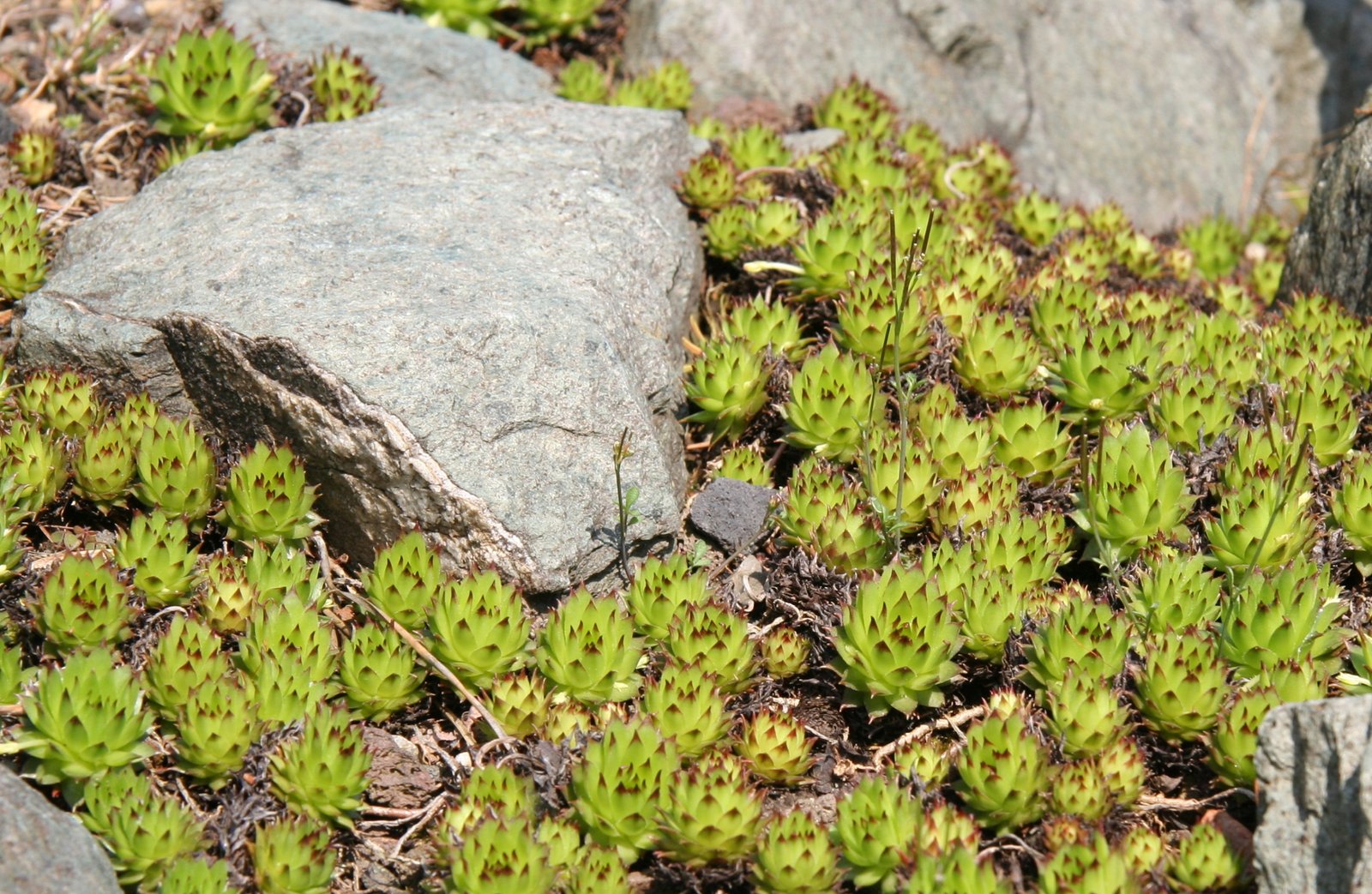
This is another species of the Hens And Chicks Succulent.
Growth
This is a perennial plant that has a mat-forming habit and they grow up to 5 to 10 centimetres in height.
Leaves
Sempervivum Macedonicum is an evergreen succulent plant and they are blue-green.
The sleaves are simply arranged in rosettes.
Flowers and Fruits
Sempervivum Macedonicum produces light purplish-pink flowers and they bloom from June to August.
The perennials produce follicles.
7. Sempervivum Marmoleum
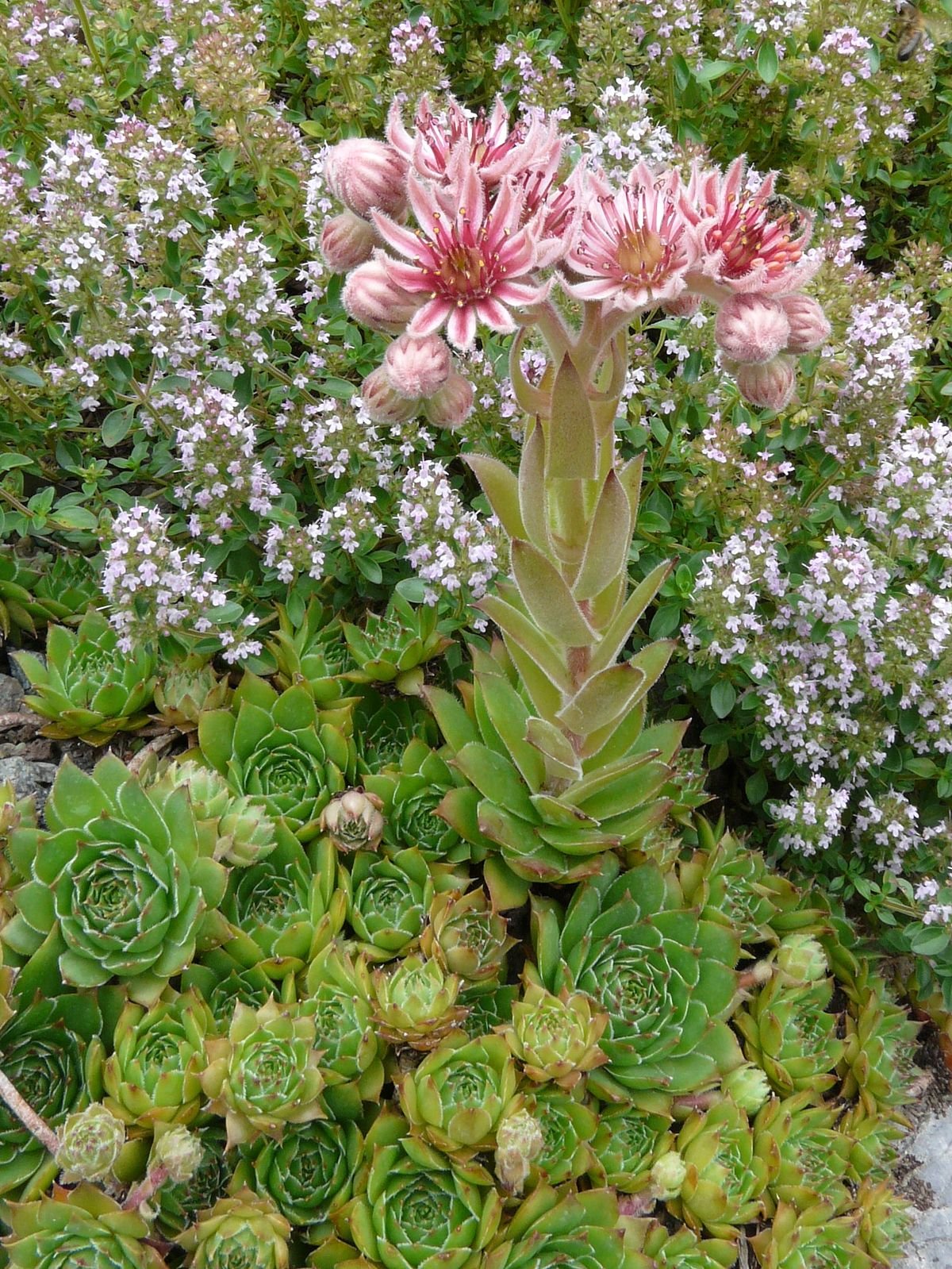
Sempervivum Marmoleum is also a succulent plant that is from the family Crassulaceae.
This succulent plant is native to south-Eastern Europe of Romania, Macedonia, Greece, Bulgaria, Serbia etc. And Central Europe.
Growth
This succulent naturally grows on rocky outcrops with southern exposure.
8. Sempervivum Pittonii
This is another succulent plant well known as Sempervivum Pittonii also called the Pittoni Houseleek.
It is also a species of flowering plant in the genus Sempervivum.
This succulent is native to the Eastern Alps of Austria.
Growth
It is a perennial succulent that is mostly like a cold-hardy climate.
physical Appearance
Look like a form of rosette succulents are evergreen perennials that form mats of fleshy-leaved rosettes.
And often attractively coloured, with star-shaped pink or pale yellow flowers in summer.
Flowers
Sempervivum Pittonii consists of fleshy, tight, green rosettes tipped with red.
The flowers are Yellow starry borne on stems in summer and each rosette dies after flowering, but offsets ensure the plant continues to grow.
- Hens And Chicks Succulents are cute little succulent plants.
- There are many varieties of these succulents.
- This succulent can be the best choice to gift your loved ones.
- Each variety of these succulents possesses` some rare and interesting facts you need to know.
- You can grow them as house plants but you have to pay attention to their health too.
Buy these beautiful succulents and you too make your home environment turn a positive vibe!
